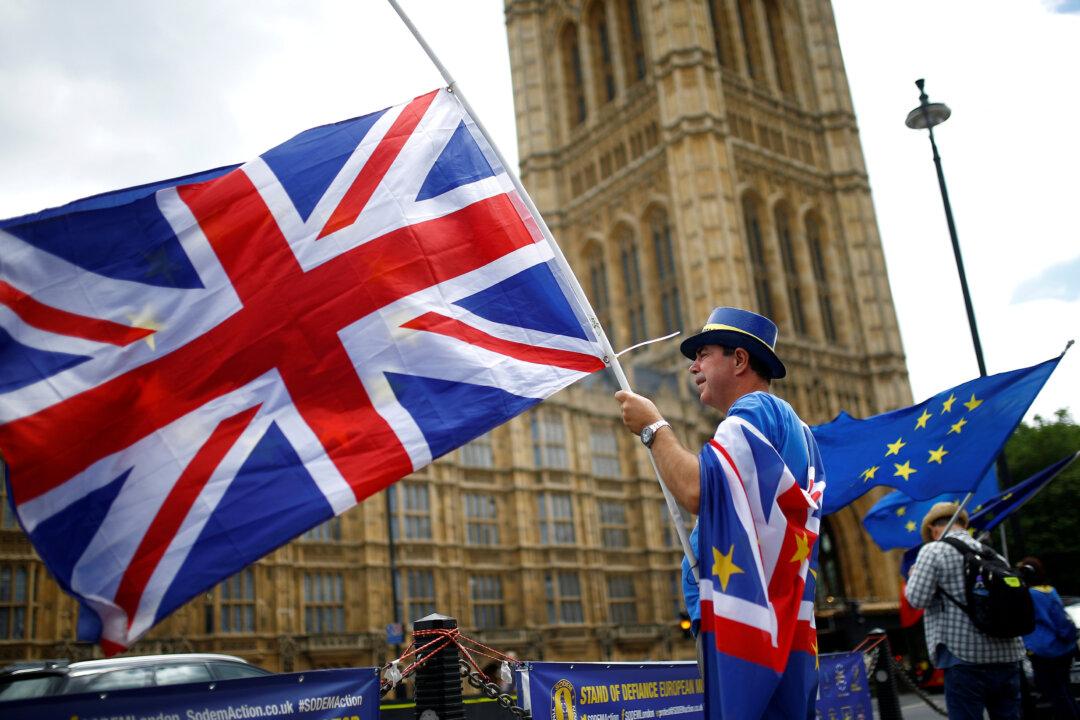LONDON/BRUSSELS—Britain said on Oct. 8 it couldn’t agree to a divorce deal with the European Union without a framework pact on future relations, throwing down the gauntlet to the bloc, which says it can’t move on talks until London does.
Both sides are eyeing significant progress at an Oct. 17-18 summit in Brussels but in different sequences—Prime Minister Theresa May wants to see the EU’s proposal for post-Brexit ties, while the EU seeks a new offering from her on the Irish border.





